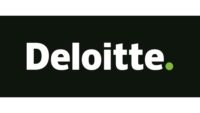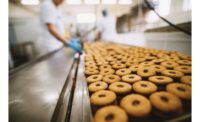As our culture shifts, food shifts right along with it. This goes for prevailing market niche trends specific to snack and bakery products sold the world over.
For 2022, in a new series of features, Snack Food & Wholesale Bakery (SF&WB) is providing a wide perspective on anticipated 2022 industry trends of note (for a look at the first installments of this series, see “2022 Snack & Bakery Outlook: Foodservice Focus,” “2022 Snack & Bakery Outlook: Foodservice Focus, Part 2,” and IRI insights into 2022 snack and bakery trends”).
In this latest installment, SF&WB connected with several industry suppliers to gain their current market perspectives for the coming year:
- Jennifer Halliburton, Senior Manager, Global Insights, Bakery, Corbion, Lenexa, KS
- Loretta Kelly, Director of Strategic Marketing, Blue Diamond Global Ingredients Division, Sacramento, CA
- Thom King, CEO, Icon Foods
- Max Maxwell, Manager, Market Intelligence, and Marilyn Stieve, Senior Product Manager, Glanbia Nutritionals, Chicago
- Shaby Fisher, Global Marketing Manager, Chaucer Foods, Hull, England
DJP: WHAT ARE THE TOP TRENDS IN SNACK AND BAKERY THAT YOU FEEL WILL IMPACT THE INDUSTRY DURING 2022?
Thom King: Healthy snacking will be, hands down, the biggest trend. Clean label and sugar reduction are key to healthy snacking. Plant-based preferences will continue to grow, with clean-label sugar reduction in plant-based options being a topper.
Shaby Fisher: Wellness trends started a few years ago, but with the pandemic, and the shift in focus of well-being, we are continuing to see a rise in this prominent trend across all food and beverage categories. A majority of consumers are more hyper-aware than ever about the products being marketed to them. They read labels, listen to mission statements, and do their full research about companies that are selling them products. The four major trends impacting their decisions are functionality and immunity, clean ingredients, innovative solutions, and sustainability.
Loretta Kelly: The pandemic will continue to shape consumer behaviors, demands, and industry trends. It ignited a focus on health and wellness, with the International Food Information Council finding that since the start of the pandemic, nearly 60% of Americans place an emphasis on their health when making food and beverage choices. Therefore, formulators must re-evaluate the possible added health benefits that their snacks and baked goods provide to please the growing group of health-conscious consumers. Plant-based alternatives for crackers, chips, breads, and cookies will also help shape future snack and bakery innovations. While Nielsen IQ found that Gen Z consumers are taking the lead with 65% wanting a plant-forward diet, consumers of all ages are looking to make a plant-based swap for their everyday snacks and baked goods.
Jennifer Halliburton: The connection between gut health and total health—consumers are interested in foods that will improve total holistic health, immune health, and foods that promise additional health benefits. For bakery products, there’s a need to ensure clear communication of key attributes and the benefits they bring. For example, besides claiming whole grain, higher fiber, and other key attributes, the on-pack messaging should also include the “So what?” so consumers understand the value of the attribute (make it simple). The “So what?”… Consumers’ connection between plants/grains and health is a positive shift that bakery manufacturers should find a way to take advantage of. As manufacturers look to take advantage of these trends, they should ask themselves: “How can bakery manufacturers help consumers connect the link between grain-based baked products and the better-for-you plant/grain-based trend?”
Loretta Kelly: In addition to increased interest in plant-based snacks and bakery goods, we’re noticing a pandemic-related shift in interest for permissible indulgences. In a recent study done by Weston Foods, 72% of Americans really enjoy eating sweet bakery treats, while that same amount are simultaneously trying to reduce their sugar intake. In order to reach these consumers, formulators must develop great-tasting indulgences while keeping health top-of-mind.
Max Maxwell: Consumers want healthier snacks and bakery items that taste great. There has been continued growth in protein-fortified snack bars, and this trend should grow in other snack and bakery items. Examples are higher-protein cookies and extruded snacks and cereals.
Jennifer Halliburton: Additional trends we’re seeing include things like “power bars,” “meals,” or “functional snacks” are breaking through, not only in the health or nutritional side of the baking and snack business, but also among mainstream consumers. Life is picking up, and consumers are seeking functional foods that also offer convenience.
Marilyn Stieve: Along with the protein trend, we also see an emerging trend for protein plus condition-specific fortification. Some examples of this include immunity, cognitive health, stress relief, and even eye health—addressing the increase in screen usage.
Jennifer Halliburton: With less ability to travel and gather due to COVID, consumers are looking for amplified experiences. Consumers are seeking adventure through food. As manufacturers look to take advantage of this trend, they should ask themselves: “How can manufacturers offer new experiences and new flavor adventurers in the food they manufacturer?” Spicy food is trending, as consumers seek adventure through region-specific heat (Innova, June 2021). Authentic and international flavors are on the rise: Asian, Thai, Vietnamese along with the Middle East, Latin American, and African flavors continue to gain momentum.
DJP: HOW ARE BAKERY CATEGORIES AND SNACKING OCCASIONS CHANGING IN THE ONGOING WAKE OF THE COVID-19 PANDEMIC, INCLUDING AWAY-FROM-HOME MARKETS?
Shaby Fisher: In the ongoing wake of the COVID-19 pandemic the food industry has seen a dramatic jump in both snacking and the consumption of comfort foods and bakery items. This is largely due to the fact that more people are spending time at home, and filling voids of boredom, stress, or sadness with foods that are both better-for-you and indulgent. NPD’s “Future of Snacking” report has reported that the average U.S. consumer ate +37% more snack foods and treats during the pandemic than they did in 2019. These numbers are continuing to rise with a shift in better-for-you snacks and bakery items.
Jennifer Halliburton: Shifting occasions—COVID continues to challenge daily lives and consumers and employers are still balancing work from home vs return to work. With many employers continuing to provide flexibility to work from home at least part of the time, the breakfast and lunch eating occasions will continue to be impacted. Consumers may yearn to dine out more, but will still eat more meals at home than before COVID. Tasty snacks that satiate and serve as meal replacements will likely continue to grow, as consumers look for easy solutions while working from home.
Thom King: With metabolic disease being the leading comorbidity associated with COVID, consumers are demanding healthier snacks and lower processed sugar. Snack manufacturers are the largest category of customers for Icon Foods.
Max Maxwell: Snacks and bakery items are improving all aspects of their nutritive value and sustainability, while not impacting taste or convenience. There has been a big shift to online ordering and at-home eating due to COVID-19. Foodservice has been rebounding from COVID-19 and is in a survival mode with minimal focus on the healthier eating desires of consumers.
Jennifer Halliburton: Consumers are very interested in premium goods and are seeking new experiences as a direct result of food fatigue. More consumers are in search of items that can bridge the gap between breakfast and lunch or can be quick and convenient when they are in a hurry. They still want the breakfast experience, but don’t want to sacrifice their time.
DJP: WHAT ARE THE BIGGEST CHALLENGES FACING THE INDUSTRY IN 2022, AND HOW CAN WE OVERCOME THEM?
Thom King: The industry will continue to face supply-chain challenges. While the raw goods market is starting to normalize, logistics is still a huge expense and unknown. The solution is buying long and making sure you are well stocked on raw goods. It may take a bite out of working capital but your COGS (cost of goods sold) and EBITDA (earnings before interest, taxes, depreciation, and amortization) will thank you later.
Marilyn Stieve: Supply-chain issues will continue into 2022 to be a big challenge for the industry as manufacturers struggle with raw material shortages and logistics challenges. Identifying secondary and domestic sources, when available, is one way to minimize risk.
Jennifer Halliburton: Supply-chain challenges will spur some manufacturers to become more self-sourced, where they otherwise relied on external inputs or co-manufacturing partners. Bakery manufacturers should partner with their ingredient suppliers in exploring alternative ingredients where there are potential ingredient shortages or quality challenges.
Loretta Kelly: While the overall supply chain might be disrupted, food producers who opt for suppliers that have strong corporate social responsibility guidelines could have a leg up on the competition. The International Food Information Council found that 60% of global consumers cite sustainability and social responsibility as essential considerations when choosing which products to buy. Formulating with plant-based ingredients is another way to gain this competitive edge.
Loretta Kelly: We need to balance rapidly growing—and changing—consumer trends with the demand for supply-chain transparency. Innovators can overcome the challenge of shifting trends—which are largely impacted by social media—by focusing on health and wellness, as well as sustainability. This will allow producers to create snacks and baked goods that have lasting relevance. One way to achieve this is by making the initial product vegan, GMO-free, gluten-free, and free-from all major allergens. Mordor Intelligence predicts the global free-from market to grow at a compound annual growth rate of 9.5% by 2026, showcasing that the market is not only currently thriving, but expected to expand significantly.
Jennifer Halliburton: Consumers know prices are going up and are more likely to stay loyal to a brand if they feel the brand is delivering on key benefits over competitive products. Bakery manufacturers should take advantage of on-pack communication as it is their key method of interaction with consumers. Bakery manufacturers should ensure they are owning all the “key attributes” of their products, as online searches are largely attribute-driven, not “brand name” driven. Bakery manufacturers should take advantage of slight ingredient modifications that can help them make on-pack functional health claims, giving them the ability to be more connected to consumers’ needs for total holistic health.
Shaby Fisher: How do we continue to give consumers what they are asking for, all while being truthful? This is the biggest challenge that the food and beverage industry is facing in 2022. With the shift in health-focused consumers, companies are scrambling to give them what they want, but running into the challenge of how to “prove” that they are doing it correctly. When looking at the four major trends impacting decisions—functionality and immunity, clean ingredients, innovation solutions; and sustainability—companies are trying to fulfill these needs, and consumers are checking them on their statements. Finding the balance can be a difficult challenge to face. The key to overcoming that challenge is to get down to basics and to not overcomplicate the process.





